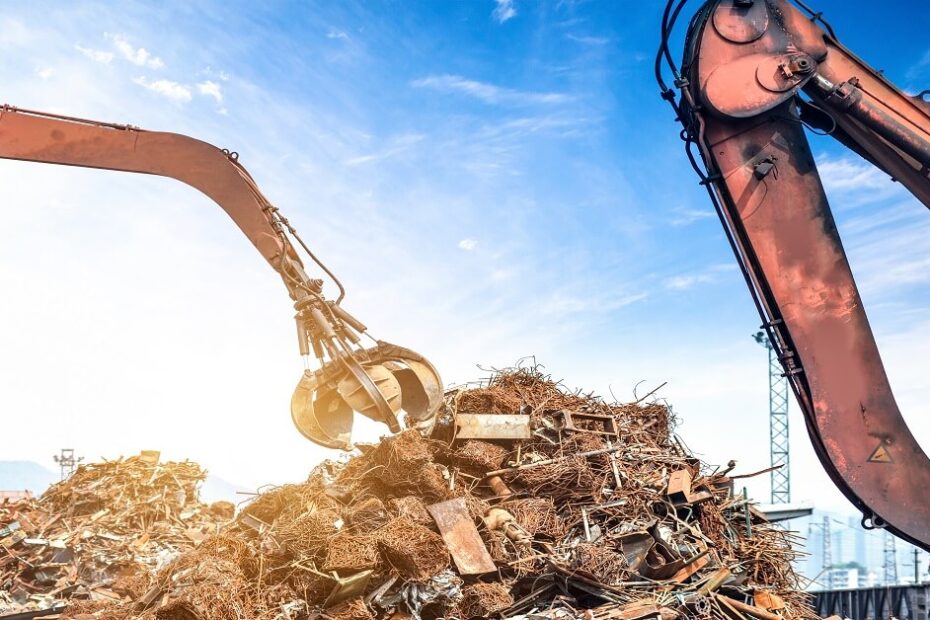In recent years, the scrap steel industry has been experiencing a significant upheaval as prices have soared to unprecedented levels. This surge in scrap steel prices has reverberated through various sectors, from construction to manufacturing, impacting businesses and consumers alike. This article explores the driving forces behind this remarkable trend, its implications, and what you need to know about the scrap steel market.
Global Economic Trends
One of the key drivers behind the surge in prices of scrap steel is the state of the global economy. Scrap steel rates are closely tied to the economy’s health because steel is a fundamental building block for various industries. As the global economy recovers from economic downturns or enters periods of rapid growth, the demand for steel increases, pushing up prices.
The global construction industry, for instance, is a major consumer of steel. During economic booms, construction projects proliferate, increasing the demand for steel products. Moreover, the manufacturing sector relies heavily on steel for machinery and equipment production. Thus, economic growth leads to higher demand for steel, which elevates scrap steel prices.
Supply Chain Disruptions
Over the past few years, supply chain disruptions have played a pivotal role in the fluctuations in scrap steel rates. The COVID-19 pandemic exposed vulnerabilities in global supply chains, causing interruptions in the steel industry. Many steel production facilities faced temporary shutdowns, reducing the availability of new steel. As a result, manufacturers turned to recycled steel as a reliable source, driving up the demand for scrap steel.
Natural disasters and geopolitical tensions have also disrupted supply chains for steel, leading to increased prices. For instance, hurricanes and storms can damage steel production facilities, while trade tensions and tariffs can disrupt the global flow of steel products. In such situations, scrap steel becomes a valuable alternative to meet the demand for steel products.
Environmental Concerns and Regulations
Environmental concerns have driven the surge in prices of scrap steel as well. Governments and industries across the globe are increasingly adopting sustainable practices, including reducing their carbon footprint. Steel production is known for its significant environmental impact due to high carbon emissions. As a result, the recycling of scrap steel is seen as a more eco-friendly option.
In response to this environmental push, regulations are becoming stricter regarding the production and use of steel. This, in turn, has driven industries and manufacturers to seek out scrap steel, which is more in line with these regulations. The scrap steel market has gained prominence with a growing emphasis on sustainability, further elevating prices.
What You Need to Know
To navigate the current scrap steel market effectively, there are a few key takeaways:
Market Volatility: Be prepared for market volatility. Scrap steel rates can fluctuate rapidly in response to economic shifts, environmental concerns, and supply chain disruptions. Staying informed and adaptable is crucial.
Sustainable Practices: Embrace sustainability. As environmental regulations tighten and consumer preferences shift towards eco-friendly products, businesses prioritizing sustainability will likely gain a competitive edge.
Diversify Suppliers: Consider diversifying your suppliers. Reducing reliance on a single source for scrap steel can enhance supply chain resilience, ensuring a steady flow of materials even during disruptions.
Global Trade Awareness: If your business operates on an international scale, keep a close eye on global trade dynamics, tariffs, and exchange rates. These factors can have a significant impact on your steel costs.
Innovation: Investigate innovative solutions. As prices continue to rise, exploring alternative materials or more efficient steel usage may help mitigate the impact on your business.
In conclusion, the soaring scrap steel prices are a complex interplay of economic trends, environmental considerations, supply chain disruptions, and international trade dynamics. While this trend poses challenges for businesses and consumers, it also presents opportunities for those who can adapt to the evolving landscape. By staying informed and proactive, businesses can weather the storm and potentially benefit from the growing emphasis on sustainability in the steel industry. As the scrap steel market continues to evolve, businesses must remain flexible and innovative to thrive in this changing environment.
